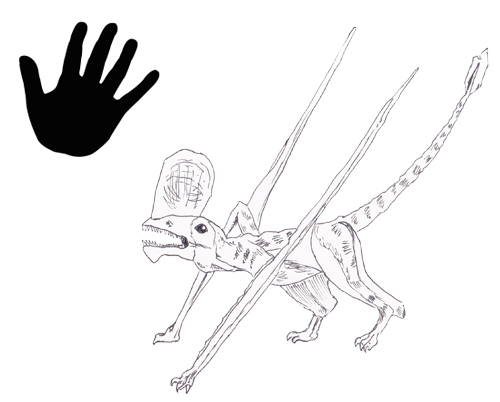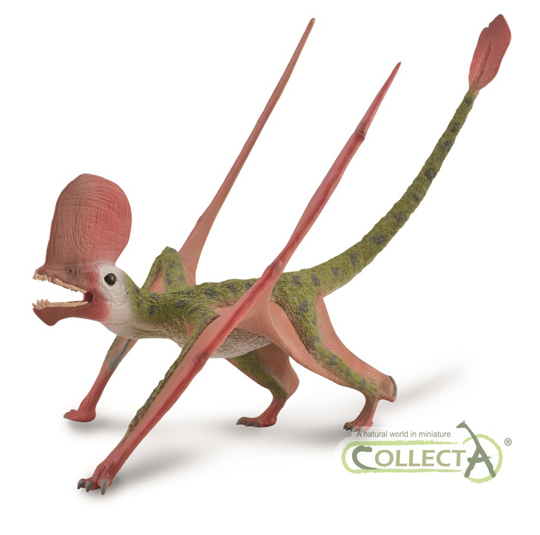Preparing for the New Caviramus
Preparations Underway for the CollectA Caviramus Pterosaur Model
At the end of November last year (2019), Everything Dinosaur revealed that CollectA would be introducing a replica of the bizarre Late Triassic pterosaur Caviramus. This 1:2 scale model, along with the rest of the remaining new for 2020 CollectA prehistoric animals, have been delayed (coronavirus outbreak), but team members at Everything Dinosaur have still been busy making preparations for this model’s arrival.
Arriving in 2020 (Later on in the Year) The CollectA Supreme Caviramus Pterosaur Model
Caviramus schesaplanensis
Of all the pterosaurs known to science (there are around 130 genera), arguably the most bizarre but poorly known are those from the Late Triassic and into the latter stages of the Early Jurassic (Toarcian stage), that have been tentatively grouped together as “Campylognathoidids”. Caviramus is one such member, assigned by several authors, although there is very little agreement amongst pterosaur experts how the various associated genera are related to each other, or indeed, how they fit into the wider Pterosauria.
The grouping consists of around half a dozen or so assorted genera, most of which have been found in Europe. European members include Austriadactylus, Carniadactylus, Eudimorphodon, Campylognathoides, Caviramus and Raeticodactylus.
Named and described in 2006 (Fröbisch and Fröbisch), from a partial lower jaw found on the western slope of the Schesaplana mountain in Switzerland, Caviramus schesaplanensis was soon joined by another species (C. filisurensis), following the scientific description in 2008 of a much more complete skeleton found in contemporaneous deposits.
As if to highlight the complexities of trying to phylogenetically plot these strange flying reptiles, Caviramus filisurensis was placed in its own genus Raeticodactylus when it was described (Rico Stetcher). However, other researchers challenged this placement and comparisons with the jawbone of C. schesaplanensis led to claims that the two pterosaur fossils represented the same species or at least they were congeneric (belonging to the same genus).
Recent Studies
A more recent study (2014), concluded that these two, closely related pterosaurs should be placed in the Raeticodactylidae family and that Raeticodactylus was the sister genus of Caviramus. This phylogenetic assessment remains controversial, as indeed does the placement of all the “campylognathoidids” within the Pterosauria. In our fact sheet that will accompany sales of the CollectA Supreme 1:2 scale Caviramus replica, we hope to provide a little more information about this Triassic flying reptile.
Everything Dinosaur’s Fact Sheet Illustration of Caviramus

Picture credit: Everything Dinosaur
Visit the Everything Dinosaur website: Everything Dinosaur.
From the Upper Triassic Kössen Formation
With their complex, multi-cusped teeth, large eyes, down-turned lower jaw tips and proportionately long wing fingers, the “Campylognathoidids” represent one of the earliest radiations of the Pterosauria. In common with most other early pterosaurs Caviramus was relatively small, with an estimated wingspan of around 1.2 metres, giving it a wingspan roughly comparable to the Common Buzzard (Buteo buteo). However, what Caviramus ate is entirely unknown. Wear and scratches observed on teeth along with studies of jaw morphology suggest that these flying reptiles were capable of processing their food in their mouths to some degree – chewing, an anatomic trait unique within the Pterosauria.
What Caviramus ate is very much open to speculation. It probably was a generalist feeding on plant material, invertebrates, small vertebrates and possibly carrion. Studies of the potential aerial abilities of Caviramus indicate that it may have flown but relied on gliding to an extent.
Problems with Dating Caviramus schesaplanensis Fossils
The fossilised partial lower jaw assigned to C. schesaplanensis comes from the Kössen Formation. Its age is uncertain due to problems over accurately dating the strata. The sediments represent a lagoonal environment that overtime, became a more open marine ecosystem but the absence of any obvious zonal fossils such as ammonites or conodonts makes accurate dating very difficult. The strata are regarded as Late Norian to Early Rhaetian in age. Based on this, our team members conclude that Caviramus was taking to the air around 210-206 million years ago.
To read our post in which we introduced the new for 2020 CollectA Supreme Caviramus replica: New for 2020 – CollectA Models (Part 5).
Everything Dinosaur’s short video announcing new for 2020 CollectA figures including Caviramus: A Guide to the New CollectA Models (Part 5).
Our team members hope to post up more information about the new for 2020 CollectA figures including when they might be in stock.
To view Everything Dinosaur’s existing range of CollectA scale models: CollectA Deluxe Replicas.


